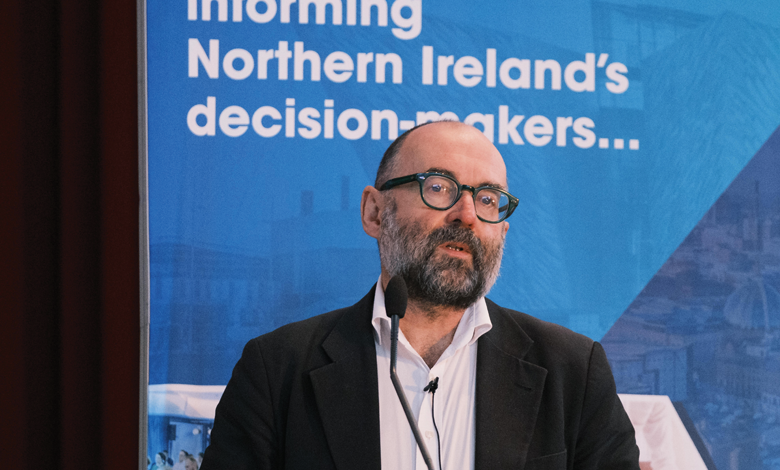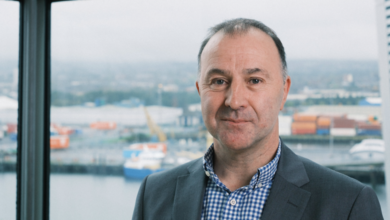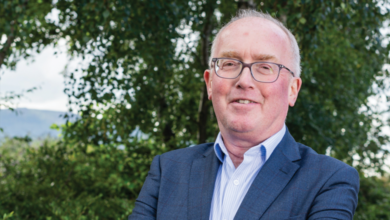Scottish Government: Delivering public services in the digital age

Geoff Huggins, Director of the Scottish Government’s Digital Directorate, discusses the creation of a unified digital infrastructure for public services.
Huggins’s work takes place in the context of the mandate of Scottish First Minister Humza Yousef MSP, who wrote to each of his cabinet members upon his appointment in March 2023, outlining his expectations of the ministers between now and the end of the current mandate.
To his Deputy First Minister, Scottish National Party colleague Shona Robison MSP, he wrote that he expected her to “target both short-term efficiencies and wider, deeper, and longer-term reform, including through rolling out modern digital services that are easy to access, reliable, and effective” which would “remove the need for manual processing, reduce failure demand, and meet people’s expectations of how they want to interact with government, securely and in a manner which protects their privacy”.
“You could probably write this for any government in terms of digital public services; all of us in government are pretty much in the same business,” Huggins says. “We are all generally using the same technologies, working across the same fields, and we are not doing particularly different things.”
Having taken up his post in 2021, Huggins was asked to review the Scottish Government’s digital infrastructure and found a fragmented system lacking in system-level overview, meaning that new digital services could be created by a variety of organisations with little to no oversight.
Having gained access to better information about what projects were in development as well as those at a planning stage, Huggins found 250 live projects and 250 projects in the pipeline. “There was a lot of commonalities, but nobody could see what was going on or planned elsewhere. As we went into the list, it began to throw up large amounts of money. We identified around £1.8 billion in lifetime costs, which are quite difficult to work with, and when we dug harder, we found that there was no business case or senior responsible officer for many of these items, so the basics of doing government were not always being followed.”
“We tend to reorganise bits of government regularly, and if you hardwire your technology to individual organisational structures, that means that with every organisational restructure, you have got to reorganise your technology.”
The Scottish Government’s directorate model “works quite well in a number of ways but where it does not do well is those areas where you need an essential guiding hand such as digital infrastructure”, Huggins says. “We have been working over the last 12 months now on how we do digital at portfolio level as opposed to project level to begin to create common understanding of how teams work and how we build in the specialist commercial services we have got into that process.”
As part of this work, Huggins and his staff will enact two proposals in 2024, one concerned with pipeline management that will centralise control over which projects go forward, and the other concerned with delivery management, which will bring senior responsible officers together for “the key 20 to 30 projects happening at any one point in time”.
Central management capability has also been an area of recent reform, with an emphasis placed on recruitment. “If we go back two years, our strike rate for hiring at first try was around 40 per cent and we were carrying a bill of around £60 million per year in contractor costs across the organisation,” Huggins explains. “As of 2023, we are currently at 90 per cent first try hire. That is because we have changed how we do recruitment, not because recruiting digital people is hard, but because we were bad at it. We have transformed that and probably saved £3 million in 2023 by replacing contractor costs with full-time staff.”
Across such upheaval, Huggins explains a key principle of working on digital in the public service: “We are working with a number of ecosystems and public bodies. We tend to reorganise bits of government regularly, and if you hardwire your technology to individual organisational structures, that means that with every organisational restructure, you have got to reorganise your technology.”
He points to areas such as education and justice and how his team have begun to build workflows with a service model rather than within organisations in order to reflect the “end-to-end process” that people encounter that “often crosses organisations”.
All of these improvements will be built upon common cloud infrastructure, through which Huggins’s team have identified savings of between 40 and 70 per cent when compared to the cost of individual teams building this element themselves.
“Increasingly what we are going to do is mandate that new work with private sector partners who use this environment. We do not want to be paying a private sector partner to use their own environment and do work which we have already done,” he says.
“We spent quite a lot of time with colleagues from Denmark in the last years and fundamentally what they have is a really firm infrastructure layer on which it becomes easy to iterate lots of services. That is good because having got that in place, that iteration process is the fun bit; you are talking to people, seeing what works and what does not. Getting the infrastructure right enables that iterative process to become the main part of the business.”
In doing this, 2024 will see Huggins supporting new processes that determine whether projects will be going ahead due to priority ordering or will need to be done in a different way than originally envisioned, a process that he approaches with a degree of caution: “The offer has to be better than the alternative. We have stopped thinking about why we think cloud is a good idea and designed a service that people are going to use it think is a good idea.
“The second step is ensuring that we had high-level buy-in at the beginning of the process by sitting down with ministers and telling them that this would be hard and that they would need to be there when people resist. That high-level buy-in to the nature of these changes is the key takeaway.”






